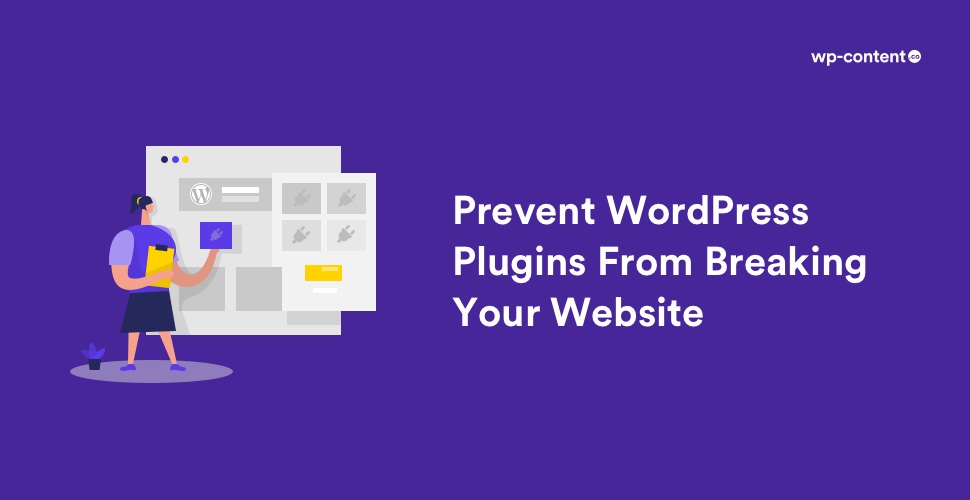A WordPress plugin is a piece of software that can enhance the functionality and features of your website. It is the plugins that have forged WordPress into the favourite of millions around the globe by making it flexible and versatile.
But installing plugins suited to your needs is not without complications. They are like the proverbial double-edged sword that can make or mar a website. Though plugins are incredibly useful, wrong plugins can damage your website and make it vulnerable to hackers by lowering the defence mechanisms.
In this article, we will focus on some of the best practices that can save you from the issues that can be caused by plugins.
1. Research before installing a WordPress plugin
Since there is a chance of plugins bringing doom, you must be very careful before installing one. Take time to think if the plugin is really indispensable or if its features are inbuilt in the site. Check its support forum, reviews, developer response, installations, cost, update frequency, and if it has been tested with the latest version of WordPress. And only if you are still impressed with the plugin should you be going ahead with its installation.
2. Review your installed plugins
It is a great idea to review your plugins regularly to see if they are still safe and functional. Check to see if you are still using it, otherwise remove it. There’s no point in keeping a plugin you are not using. Also, verify if it is still supported by the developers or has been abandoned.
3. Install only trustworthy plugins
You can assess the trustworthiness of a plugin from its number of active users, customer reviews, last updated date, and update frequencies. Keep your hands off plugins with lots of negative reviews and no recent updates. Developer support is a must or you will be on your own if some issue crops up.
4. Avoid Nulled Plugins
Nulled plugins are pirated copies distributed unethically on the internet without the permission of the original developer. These pirated versions must be avoided at all costs because they are illegal and also cost your website its SEO ranking and security features leaving you in a real pickle. Don’t try to save a few bucks compromising your website.
5. Keep plugin numbers low
Excessive use of plugins can throw your website out of gear. Too many cooks spoil the soup and too many plugins will spoil your website. They may interfere with the performance of your website or cause compatibility issues with each other or with the theme or with WordPress source code. So keep only those plugins that are critical to your website. Also, remember to download the plugins only from reputable sources like the WordPress repository.
6. Choose a reliable theme
Choose a theme with the same amount of consideration that you would give for a plugin. Pick a theme that would give a magic touch for your website and also work smoothly alongside the plugins you have installed. Download the theme from dependable sources and also keep it updated to ensure the smooth functioning of your website.
Also read: Selecting a WordPress Theme – 9 factors to consider while searching for the perfect Theme
7. Update plugins
Your responsibility does not end with researching a good plugin and installing it. You must make sure to keep it updated for maintaining your website secure. Plugins not updated to the latest versions remains one of the major reasons for WordPress sites being attacked. So keep your plugins updated to avoid tempting external attacks. You can know about available updates from the WordPress dashboard itself.
8. Learn Troubleshooting
Sometimes you may find that one of your installed plugins is affecting the performance of your website. In such a scenario, you can troubleshoot to restore the functionality of the site. If deactivating all the plugins solves the issue, then you can assume that a plugin is causing the issues. Reactivate the plugins one by one to pinpoint the culprit. You can also get the help of experts or support forums if the problems escalate.
9. Choose a Reliable Hosting Provider
The role of a good host in ensuring your site’s performance can never be overemphasized. You may choose any hosting type like shared hosting or managed hosting depending on your budget and site’s traffic. We have already done detailed articles on things to consider while choosing a hosting provider and also listed the providers to make your task easier. Please go through it and choose a provider that does not clash with your plugins.
Also read: Best Managed WordPress Hosting Providers
10. Keep Backups
It never hurts to maintain backups. In case something goes wrong while installing a new plugin, you can always depend on these backups to reinstate your website to the previous condition. There is no need to worry about any data loss if there is a backup. Always create backups before installing themes or plugins. You can either create it manually or automate it.
Also read: Top 10 WordPress Backup Solutions
By following the practices discussed above, you can reduce the risks from plugins to a great extend and protect your website. Remember Rome was not built in a day and therefore don’t discard the above points after following it just once.


